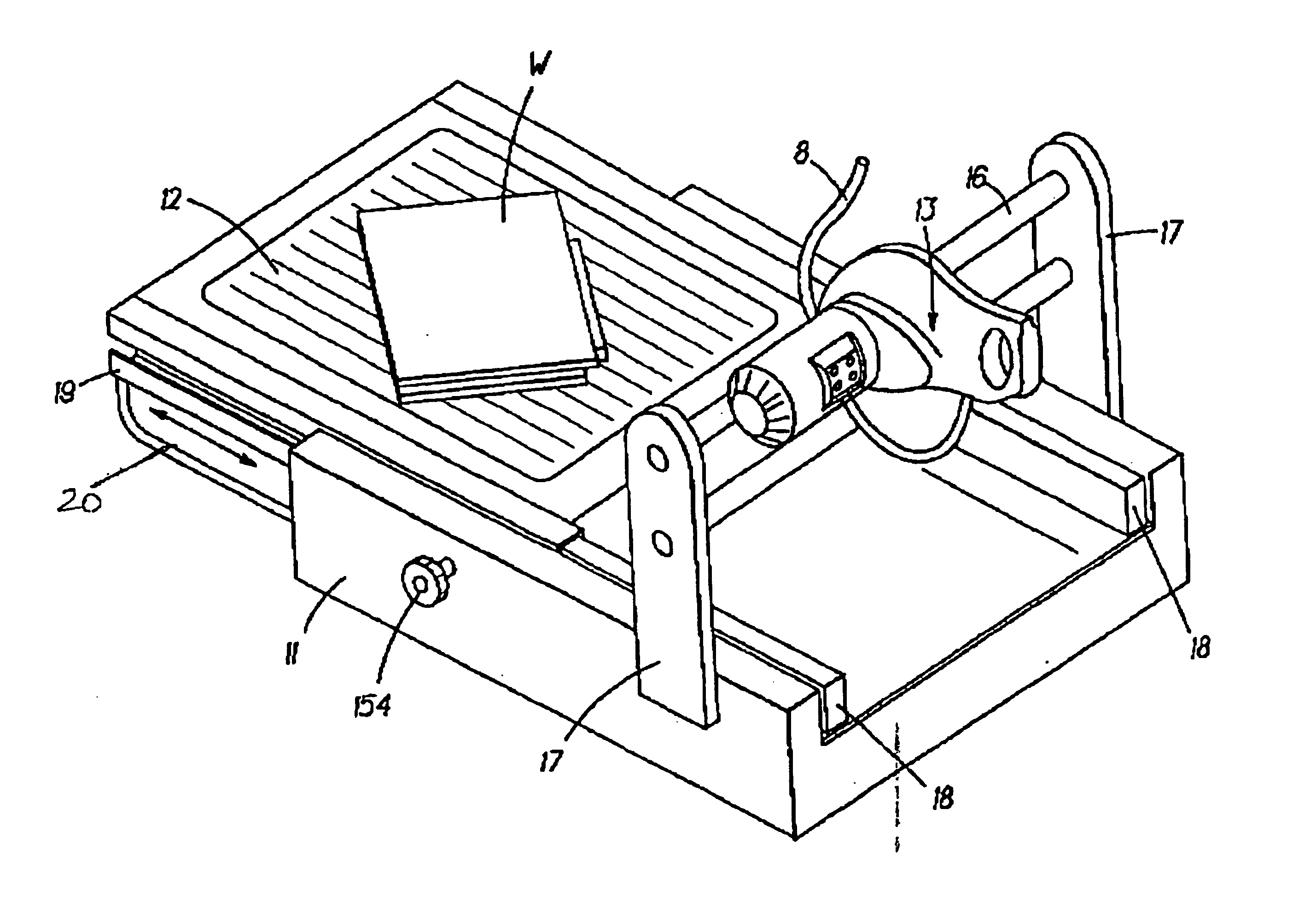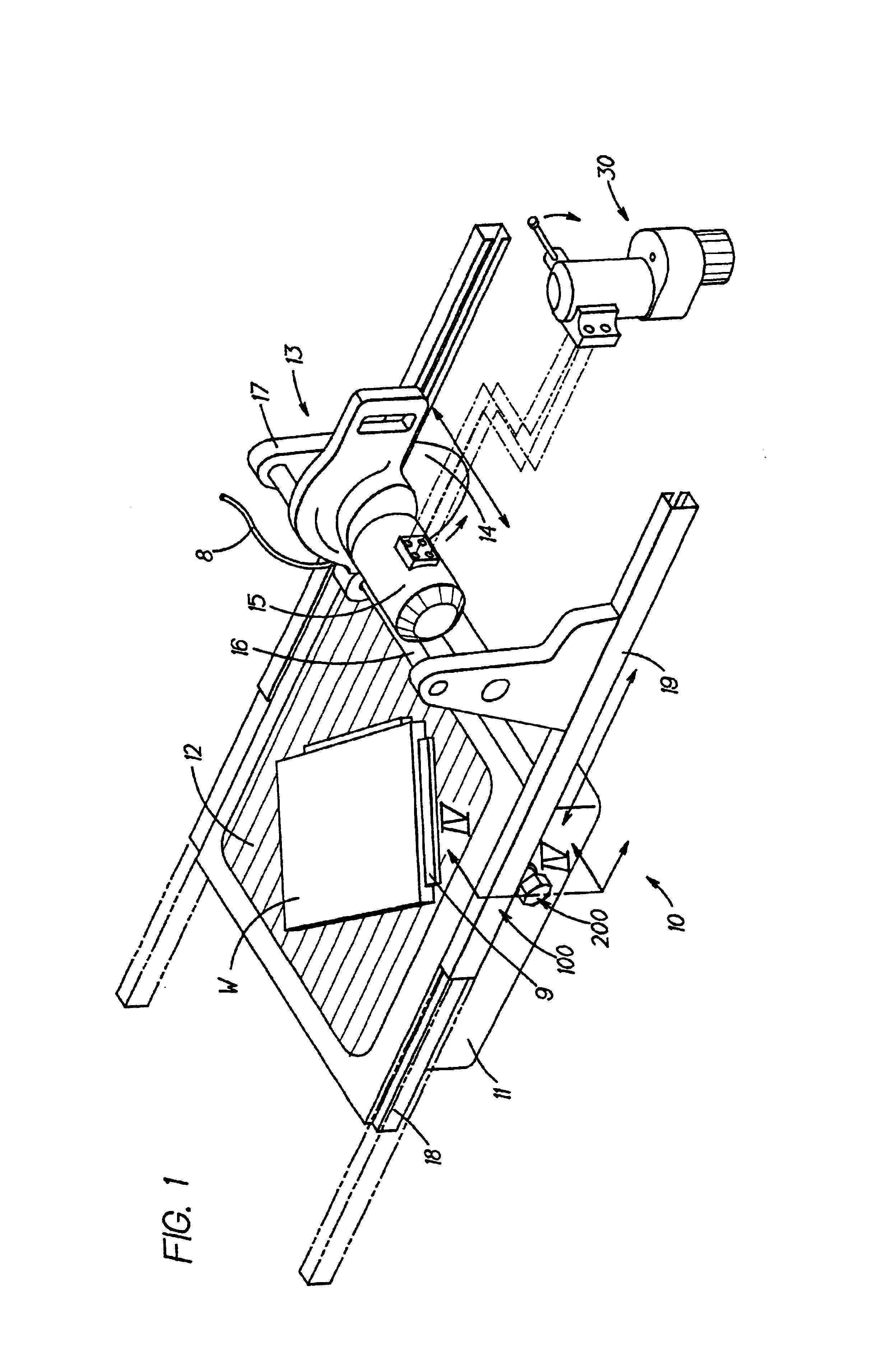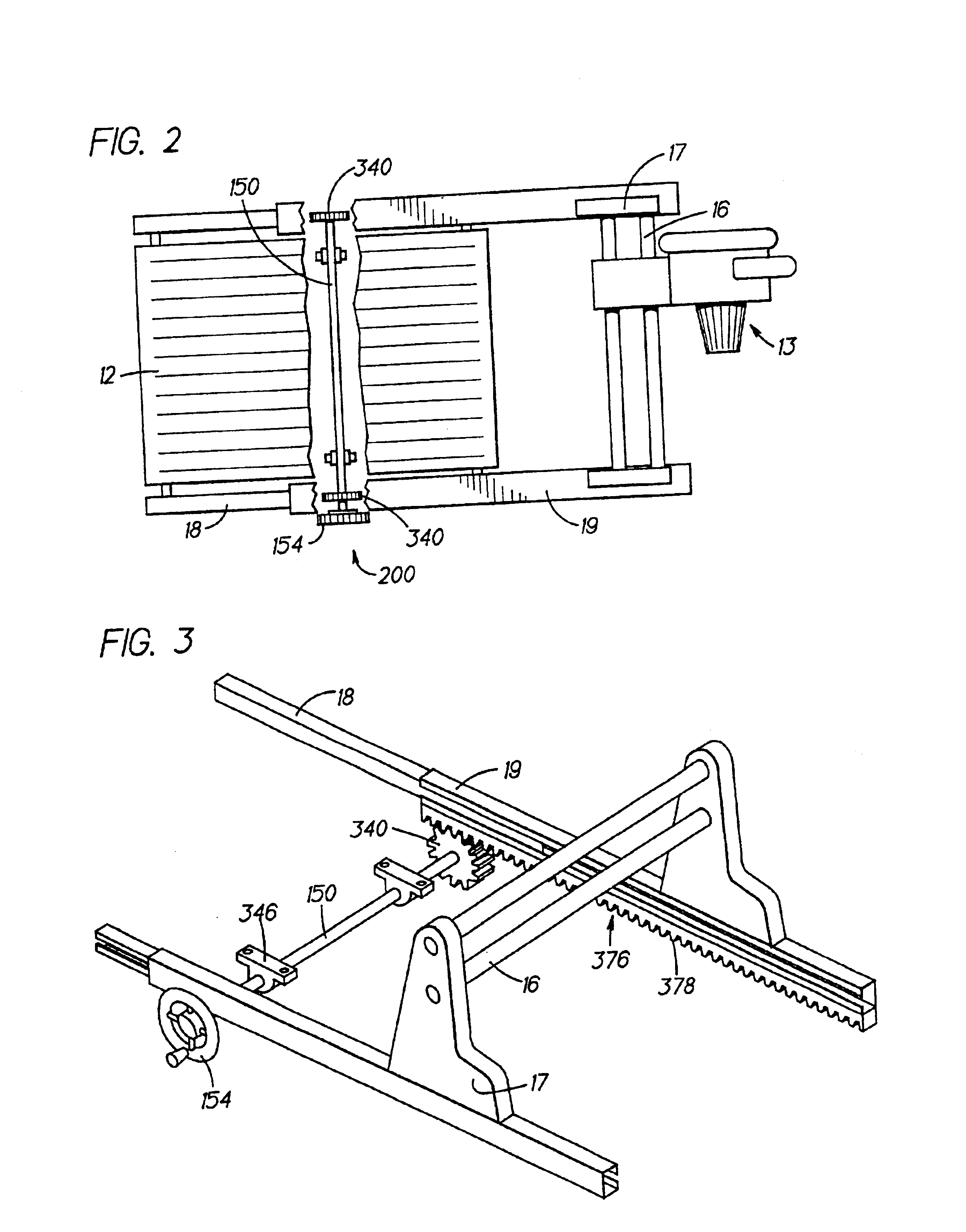Tile saw
a technology of tile saws and saws, which is applied in the field of tile or masonry saws, can solve the problems of limited loss of time, materials and/or profits for users, and limited maximum cutting capacity of such tile saws,
- Summary
- Abstract
- Description
- Claims
- Application Information
AI Technical Summary
Benefits of technology
Problems solved by technology
Method used
Image
Examples
Embodiment Construction
The invention is now described with reference to the accompanying figures, wherein like numerals designate like parts. FIG. 1 illustrates a first embodiment of the present invention, where tile saw 10 comprises a base 11 which supports a generally rectangular work table 12. Slidable relative to table 12 is saw unit 13, which comprises a blade 14 and a motor 15 driving the blade 14. The saw unit 13 is slidably disposed on guide rods 16, so that the saw unit 13 can be positioned at any position along rods 16. Persons skilled in the art will recognize that one guide rod 16 may be used, but it is preferred to use at least two rods 16 in order to maximize stability.
Further, saw unit 13 can be adapted to bevel, i.e., change the angle of blade 14 relative to the table 12, as is known in the art.
Saw unit 13 also has a water conduit 8 for lubricating and cooling the blade 14, as is known in the art. Water sent through conduit 8 will drain into base 11 through table 12 and may be repumped thr...
PUM
| Property | Measurement | Unit |
|---|---|---|
| length | aaaaa | aaaaa |
| size | aaaaa | aaaaa |
| time | aaaaa | aaaaa |
Abstract
Description
Claims
Application Information
 Login to View More
Login to View More - R&D
- Intellectual Property
- Life Sciences
- Materials
- Tech Scout
- Unparalleled Data Quality
- Higher Quality Content
- 60% Fewer Hallucinations
Browse by: Latest US Patents, China's latest patents, Technical Efficacy Thesaurus, Application Domain, Technology Topic, Popular Technical Reports.
© 2025 PatSnap. All rights reserved.Legal|Privacy policy|Modern Slavery Act Transparency Statement|Sitemap|About US| Contact US: help@patsnap.com



